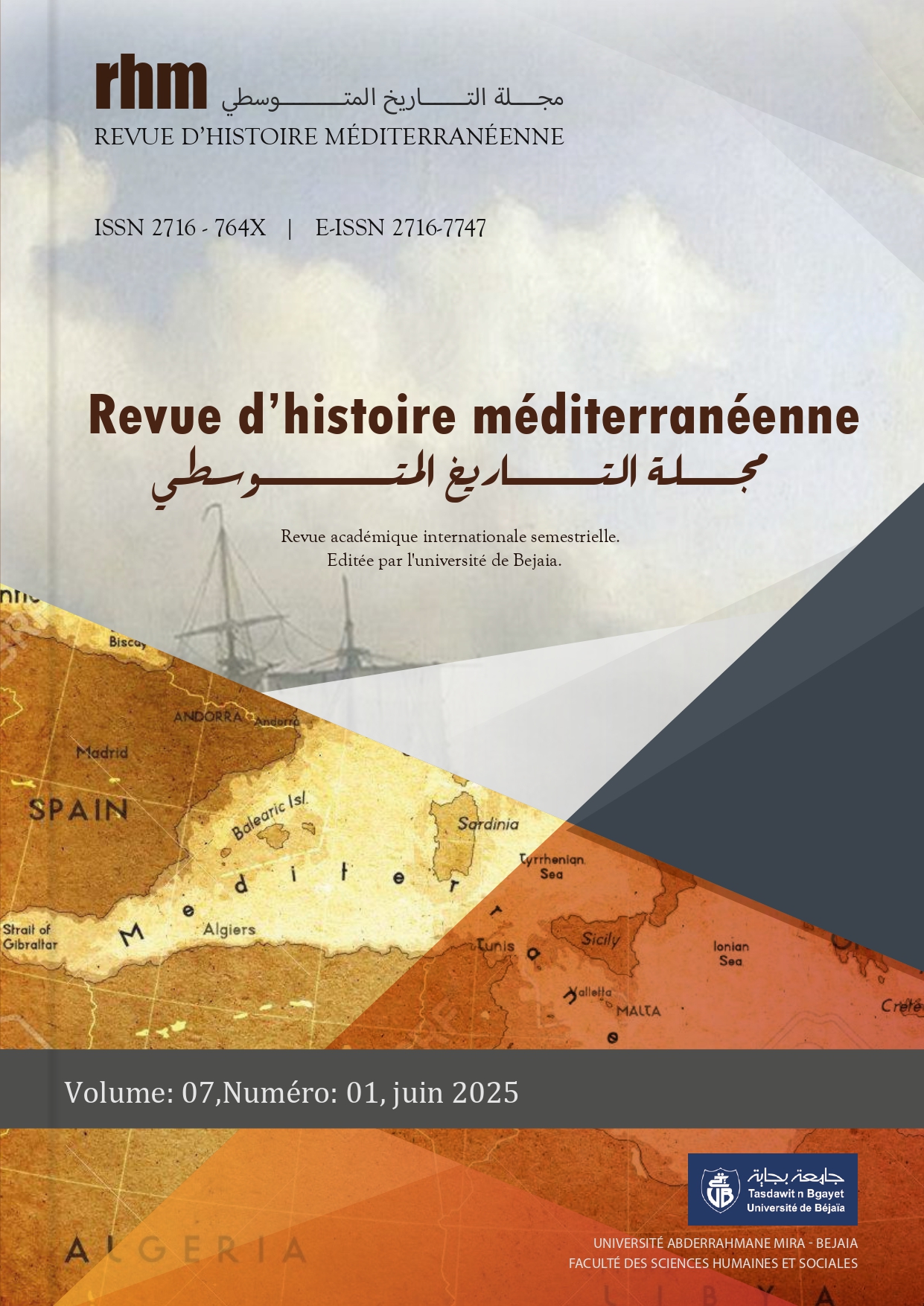The impact of Andalusian cities on the transmission of translated Arab-Islamic heritage to Europe during the middle ages (Córdoba and Toledo as models)
L'impact des villes andalouses sur la transmission du patrimoine arabe-islamique traduit en Europe au moyen age (Cordoue et Tolède comme modèles)
Résumé
Le patrimoine intellectuel et culturel de l'Europe a été grandement influencé par le patrimoine scientifique arabo-islamique, la traduction étant le principal moyen de transmission des connaissances. Sans cette transaction, l'Europe serait peut-être restée pendant des siècles dans les « profondeurs de l'obscurité ». Al-Andalus, notamment Cordoue et Tolède, a joué un rôle essentiel dans cette transmission, établissant des liens entre les différentes civilisations grâce à des échanges culturels et scientifiques. Ces villes étaient le siège de savants, de traducteurs et d'intellectuels qui travaillaient sans relâche pour conserver et transmettre les connaissances arabes et islamiques. Il est crucial de comprendre ce processus de transmission afin de reconnaître la dette intellectuelle de l'Europe envers le monde arabo-islamique, en particulier dans les domaines de la médecine, de l'astronomie, des mathématiques, de la philosophie et de l'ingénierie. Cependant, la plupart des textes existants ne mettent pas assez en évidence les apports spécifiques de Cordoue et de Tolède, présentant Al-Andalus comme une entité monolithique plutôt que de reconnaître le rôle distinct de ces villes. L'objectif de cette étude est de pallier cette lacune en examinant l'influence particulière de ces centres dans le mouvement de traduction, les processus de transfert des savoirs et leurs conséquences à long terme sur le développement scientifique et culturel de l'Europe.
Située sur le Guadalquivir, Cordoue était l'une des villes les plus développées de l'Europe médiévale, rivalisant avec Bagdad et Le Caire en termes d'influence intellectuelle et culturelle. Sous Abd al-Rahman al-Nasir et Al-Hakam II, Cordoue est un centre d'apprentissage, avec une grande bibliothèque et un marché du livre florissant. Elle attira des chercheurs de différents milieux - musulmans, chrétiens et juifs - créant ainsi une ambiance d'échange de connaissances inédite. Plus tard, les madrasas et les centres de traduction de la ville ont joué un rôle essentiel dans la conservation et la transmission des œuvres scientifiques et philosophiques, ce qui a eu un impact sur les érudits européens. Cette tradition intellectuelle fut perpétuée par Tolède après sa reconquête chrétienne en 1085. À la différence d'autres villes conquises dont le niveau culturel déclina, Tolède demeura un centre d'apprentissage arabe grâce à des souverains tels que Alphonse VI qui encouragea l'étude et la traduction des œuvres arabes.
Le rôle de l'école des traducteurs de Tolède, sous la direction de Gérard de Crémone et Dominicus Gundissalinus, fut essentiel dans la diffusion des connaissances arabo-islamiques vers l'Eurasie latine. Ces traducteurs rendirent accessibles en latin des œuvres essentielles en médecine, en philosophie, en mathématiques et en astronomie, influençant directement les bases intellectuelles de la Renaissance européenne. Ainsi ces deux villes jouèrent un rôle déterminant dans les mouvements culturels entre la pensée islamique et la pensée européenne. Les établissements scolaires créés et les bibliothèques de Cordoue, au même titre que le mouvement de traduction de Tolède, assurèrent la sauvegarde et la transmission des œuvres représentatives d’un savoir qui aurait sans cela disparu. L’analyse engage ici la voie sur laquelle cet héritage culturel de l’intellect arabe a permis à l’Europe de sortir du Moyen Âge pour accéder aux Lumières.
S’il n’y avait eu la participation de Cordoue et de Tolède, plusieurs grandes œuvres des savoirs philosophiques ou scientifiques fondateurs n’auraient pas pu atteindre l’Europe, modifiant ainsi son devenir culturel. On comprend mieux l’interdépendance qui lie ces civilisations et l’héritage duré du savoir arabo-islamique face à ceux de l’adversaire dans le progressif et puissant cheminement vers l’érudition de l’Europe, quand Cordoue et Tolède se positionnent comme bénéfices premiers d’un transfert de savoirs fondateurs qui constitue l’assise des destinées humaines.










